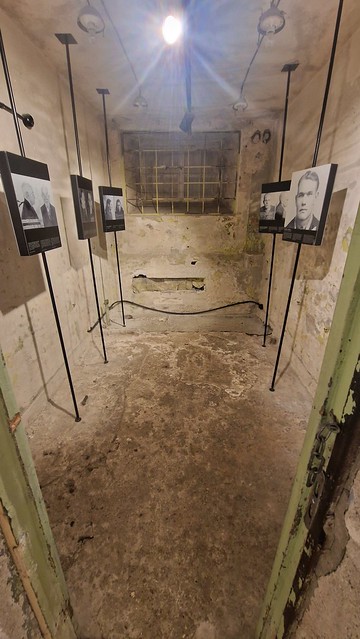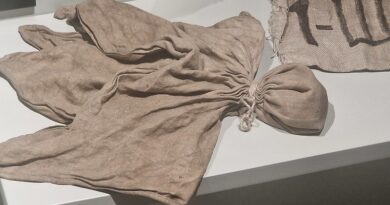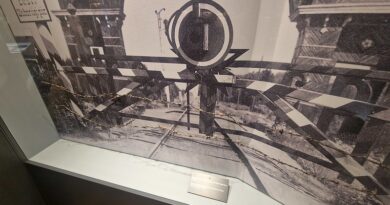Tallinn Trip – KGB Prison Cells
The KGB Prison Cells are located at Pagari 1 in Tallinn in a structure that was constructed in 1912 as an apartment building. It was briefly used by the Estonian Provincial Government in 1918 and then by the Estonian Ministry of War between 1920 and 1940. Following the Soviet occupation of Tallinn, the building was taken over by the NKVD (People’s Commissariat for Internal Affairs), which later became the KGB and they built the cells in 1941. It was opened as a museum in 2017 to remind visitors what totalitarian regimes were like and the cells used up until the late 1950s were made accessible.
We got free admission with our Tallinn Cards, but to visit individually it would be €9 which felt very excessive to me given that it’s effectively one corridor with some cells.
Susanna reading everything. There are some museums and galleries in the world where she has got there first thing in the morning and then had to leave at the end of the day as they’re closing. We use Bev to try and keep her under some control as otherwise Susanna rarely seems overwhelmed by the number of exhibits or the amount that there is to read.
That’s the reverse of a staircase and was used as a very tight cell. I’m slightly sceptical just how many times that this might have been used.
This old plan of the floor shows where the above cell is located. The only area open to the public is the corridor on the right hand side and the six cells.
It’s noted that chairs such as this were used for the interrogation of prisoners, although I’m not sure that this particular one actually comes from this building. There is though an interesting document written in 1977, which has been translated into English, which is on display as is a guide for prisoners on how they should behave during interrogation and questioning. It’s a ‘Samizdat’ document, which is means self-published and relates to documents that were copied and handed around to dissidents and members of the resistance movement.
The cells wouldn’t have been pleasant and those who found there way here would have nearly always ended up in a larger prison or would have been executed.
A cupboard. The museum claims that cupboards such as these would have been used from the 1940s until the 1980s to temporarily isolate individual prisoners, although that wouldn’t have happened here for that length of time. I’m not sure that the museum has much detail about this particular structure, although they say that it does come from the property. The cells were mostly cleared out in the 1950s, so there’s been a lot of imagination required here.
As with all these things, they’re useful reminders of the repression that took place in Tallinn during the Soviet occupation between 1945 and the late 1980s. However, the prison cells stopped being used by the KGB in the 1950s and although the museum notes that were “the most notorious cells in Estonia”, they weren’t much used as they were turned into a space for archives in the late 1950s. A visit here isn’t likely to take more than around twenty minutes, but it’s worth popping in for holders of the Tallinn Card and I’m glad that these have been preserved for future generations. It is though difficult to leave a museum such as this with feeling a slightly heavy heart for the dark side of history that feels so nearby so often.












